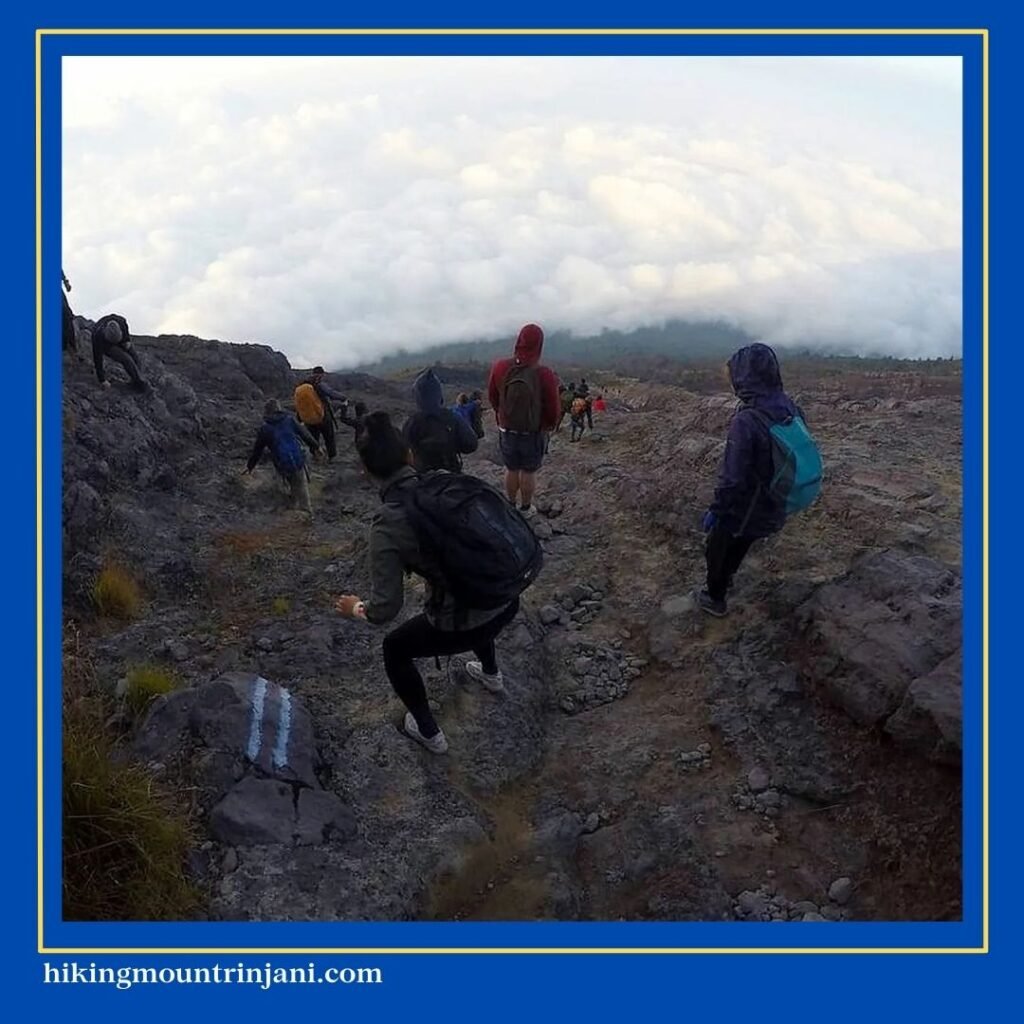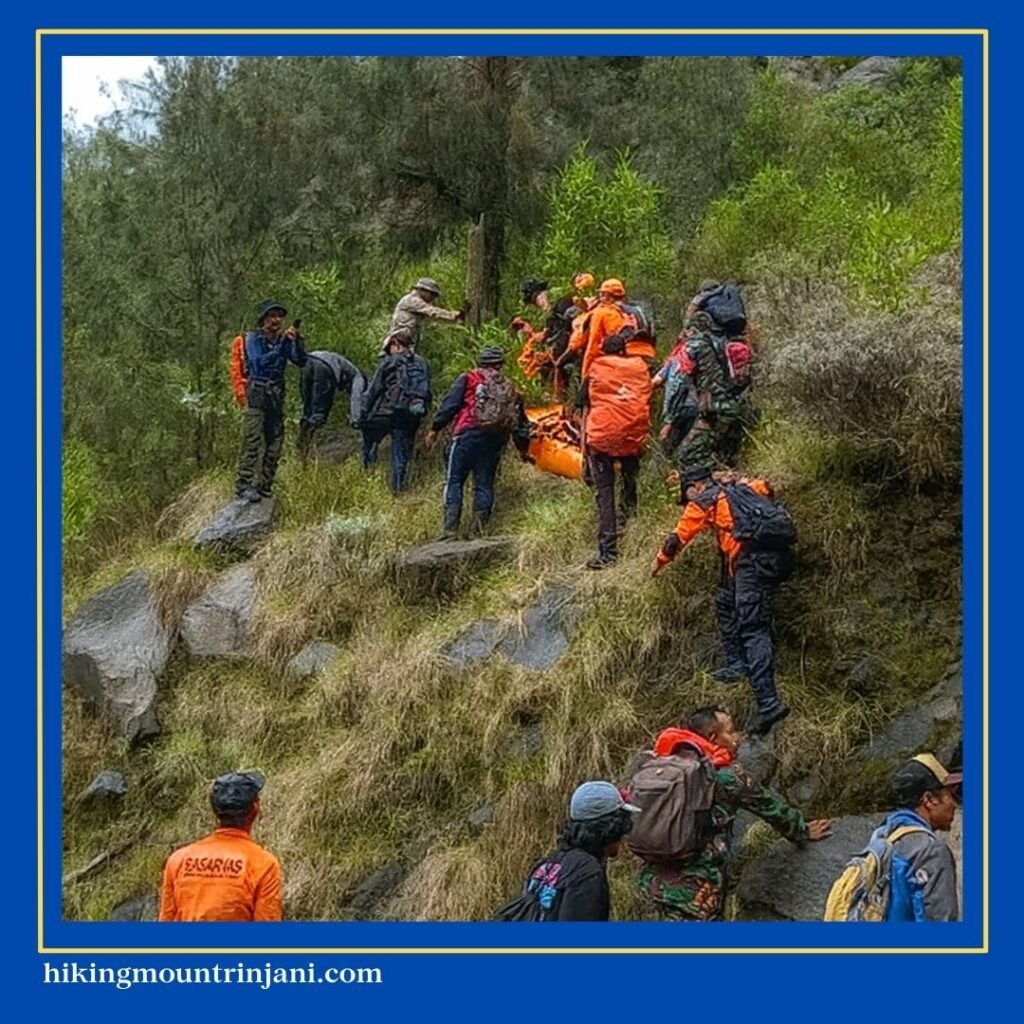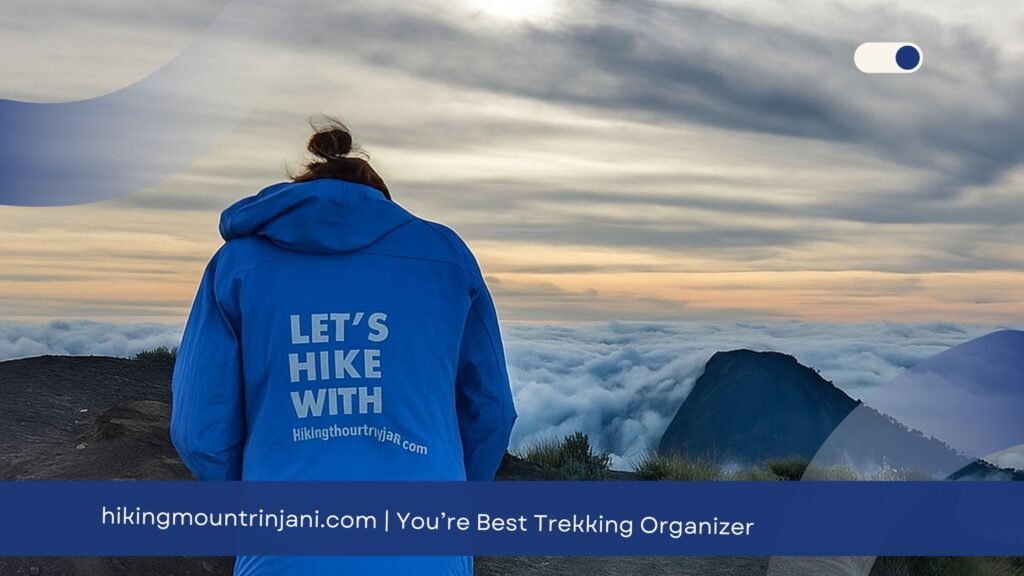Is Mount Agung or Rinjani Harder – Planning a hiking trip in Indonesia often leads travelers to two of the country’s most iconic volcanoes: Mount Agung in Bali and Mount Rinjani in Lombok. These mountains are not only physically impressive; they also carry deep cultural significance, unique natural environments, and unforgettable summit views.
But if you are deciding between the two, one question naturally comes up: Is Mount Agung or Rinjani harder to climb?
The answer is not as simple as comparing altitude or distance. Each mountain offers a very different kind of challenge—physically, mentally, and even logistically. Before we get into the detailed comparison, let’s understand the fundamentals of both mountains.
Getting to Know Mount Agung and Mount Rinjani
As a hiker planning a journey in Indonesia, having a clear picture of these two mountains will help you prepare better and choose the climb that suits your fitness level and expectations.
1. Mount Agung (Bali)

Mount Agung is the highest point in Bali at 3,031 meters above sea level. For the Balinese, this volcano is sacred and central to local Hindu culture. Because of its steep slopes and narrow ridges, Agung is known for providing a direct, intense ascent from the moment you step onto the trail.
Entrances & Trek Routes:
- Pura Besakih Route: Traditionally the most famous route, but access can be restricted during major ceremonies.
- Dukuh Village Route: Steep, quiet, and demanding, used as an alternative when Besakih is closed.
- Pura Pengubengan Route: Shorter but extremely steep and technical.
Many hikers underestimate Agung because it is often marketed alongside the easier Mount Batur. But the reality is that Mount Agung requires solid physical preparation, proper equipment, and good weather conditions.
2. Mount Rinjani (Lombok)

Mount Rinjani stands taller at 3,726 meters, making it one of the highest peaks in Indonesia. Unlike Agung’s narrow volcanic ridges, Rinjani features a wide caldera, a crater lake (Segara Anak), hot springs, and long trails that combine steep ascents with expansive viewpoints.
Entrances & Trek Routes:
- Sembalun: The most popular route for summit attempts; long but manageable with steady inclines.
- Senaru: Scenic forest section and a classic descent route.
- Torean: Known for its dramatic river valley and technical sections; now increasingly popular.
Rinjani’s management system is more established. Trekking permits, experienced guides, porters, and safety procedures make it a popular but well-organized adventure.
.
Read also: Mount Rinjani Summit Tour: Highly Recommended Experience
Is Mount Agung or Rinjani Harder? Here’s the Comparison
To answer the question honestly, it’s important to consider the lived experiences of hikers. Two real stories highlight very different sides of these mountains—Rinjani’s demanding endurance and Agung’s extreme steepness and risk factors.
1. A Hiker Who Climbed Rinjani Before Agung

One hiker shared that they had climbed Mount Rinjani six months before attempting Agung, giving them a firsthand basis for comparison. They explained:
“I climbed Mount Rinjani 6 months before Agung. And I must admit, Rinjani was difficult.”
Rinjani’s challenge comes from its multi-day format, long distances, and demanding sandy summit stretch. But when they attempted Mount Agung later, the mountain revealed its own intensity in a very different way.
Because the Besakih route was closed due to a religious ceremony, the hiker used the Dukuh Village access and camped at Base Camp 2 (around 1,900 meters). The conditions were hot and dry in early October, so they relied heavily on sunscreen and stayed hydrated.
Mount Agung is less popular than Mount Batur because Batur offers a caldera view and natural spring water, so hikers usually need to bring plenty of water when climbing Agung. Meanwhile, Rinjani’s trails are generally busier, but there are times when hikers may encounter an unusually quiet atmosphere, meeting very few people along the way—an experience that can feel peaceful yet slightly lonely.
As the hike progressed, the steep terrain of Agung demanded more from their legs. Eventually, they stopped 300 meters before the summit at Sunrise Point 2:
“My knees felt like jelly, especially on the descent. But the view was priceless.”
Their story shows that Agung may not be as long as Rinjani, but its relentless incline and technical footing can be just as exhausting, especially if you descend on tired legs.
2. A Dramatic Story Showing Mount Agung’s Difficulty Under Bad Weather

Another hiker shared a much more extreme account. Their trip took place during unexpectedly harsh weather conditions—something all hikers must consider before choosing Agung.
Their story begins with a warning:
“The first thing you need to know about this hike is that it’s not a hike. I repeat: this is not a hike, it’s a climb!”
This hiker had previously completed the Inca Trail in Peru, Mt. Sinai in Egypt, and even ran a 56 km trail in Australia. Despite their experience, Agung offered a challenge unlike anything they expected.
They described rainstorms during the drive, flooded roads, minimal communication with their guide, no safety briefing, and lack of proper gear rental. They began the ascent at 1:30 a.m., going straight up steep stairs before reaching the true trail.
The ascent quickly turned into a river:
“Because it had been pouring for nearly three hours, the path wasn’t a path—it was a river.”
As they climbed in the dark, the incline shifted constantly between 60–80 degrees, pushing their calf muscles to their limit. When they reached the rock terrain, they had to climb using both hands due to wet, slippery surfaces. Panic attacks were common among other hikers.
There were moments of real fear:
“One wrong grip or foot placement and I could roll down the side of a volcano.”
They eventually reached the summit in the rain and clouds, unable to see anything at first. After descending through slick rocks and more rain, the exhaustion set in completely.
This account, while intense, shows an essential truth:
Mount Agung becomes extremely dangerous in bad weather, and the difficulty multiplies instantly.
So Which One Is Harder?
If the weather is good:
- Rinjani is generally harder due to its multi-day format, long distance, and altitude.
- Agung is steep and intense but shorter overall.
If the weather is bad:
- Agung becomes significantly more dangerous and technically demanding, especially on the upper rock sections.
- Rinjani’s trails remain more manageable thanks to established systems and better safety structures.
For newer hikers or those with moderate fitness, Rinjani is usually the safer choice. For experienced hikers seeking a steep, fast challenge, Agung offers that intensity.
.
Read also: How Good Is the Mount Rinjani Summit Trek? Here’s the Journey
Looking for a Safer Option? Join Us for a Mount Rinjani Hike

If you want a challenging but well-managed mountain with reliable trail systems, Mount Rinjani is an excellent choice. Over the years, this volcano has undergone significant improvements to ensure safer, more enjoyable trekking experiences for hikers from around the world.
With Hiking Mount Rinjani, you will receive:
- Premium insurance coverage
- Experienced English-speaking guides
- Professional porters to carry your logistics
- Detailed preparation assistance
- Clear planning of all routes and target points
- Safety-first trekking procedures
- Everything, from communication to equipment checks, will be handled with care, allowing you to focus on the adventure.
If you are planning to climb Rinjani soon, we invite you to join us. Visit: hikingmountrinjani.com or contact us on WhatsApp.
We look forward to guiding you on a safe, memorable journey to one of Indonesia’s most breathtaking summits.
.

